 Google's HTC One strips away Sense in favor of stock Android, Nexus-style.
Google's HTC One strips away Sense in favor of stock Android, Nexus-style.
So far, 2013 has brought with it a number of changes to Google's Android strategy. More and more apps and services are being separated from the core of the operating system to allow for easier updating. Google didn't take advantage of Google I/O to announce a new version of Android, and what we've seen of the rumored version 4.3 suggests that it will be a relatively minor update. And Google is working with its partners to sell versions of their high-end smartphones that run stock Android instead of those partners' respective Android skins.
The roster of so-called Google Play-edition phones doesn't replace Google's tailor-made Nexus products, but it does augment them—if you don't like the design of the Nexus 4 or its lack of LTE, these handsets are intended to give you the stock Android experience running on the best hardware anyone is making today. Samsung's Galaxy S 4 and the HTC One are the first two phones on offer, and we'll look at the One here.
Whether you prefer the stock Android experience to HTC's Sense and its add-ons is largely a matter of taste, but there are some things about the Google Play edition of the phone that are objectively better, worse, and just plain different from the standard edition. It is to these aspects of the phone that we'll be paying the most attention. For more on the standard edition of the One, our review of it ishere; more detailed information on Android 4.2 is here.
The hardware
The phone's shell is nearly identical to the subsidized, locked versions of the One you can go out and buy from your carrier. The only external difference between the two phones is the AT&T logo etched onto the back of the standard One.| SPECS AT A GLANCE: HTC ONE GOOGLE PLAY EDITION | |
|---|---|
| SCREEN | 1920×1080 4.7-inch (468 PPI) Super LCD 3 with RGB Matrix |
| OS | Android 4.2.2 |
| CPU | Quad-core 1.7GHz Qualcomm Snapdragon 600 |
| RAM | 2GB |
| GPU | Qualcomm Adreno 320 |
| STORAGE | 32GB NAND flash |
| NETWORKING | 802.11a/b/g/n/ac, Bluetooth 4.0, NFC |
| PORTS | Micro-USB, headphones |
| CAMERA | 4MP rear camera with "UltraPixel" image sensor, 2.1MP front camera |
| SIZE | 5.41" × 2.69" × 0.37" (137.4 × 68.2 × 9.3 mm) |
| WEIGHT | 5.0 oz. (143 g) |
| BATTERY | 2300 mAh |
| STARTING PRICE | $599 |
| SENSOR | Accelerometer, gyroscope, digital compass, proximity sensor, ambient light sensor |
Otherwise, this is the same handsome aluminum body and 1080p IPS touchscreen that we saw in our One review earlier this year. Whether you prefer to hold the One, the Nexus 4, or the Galaxy S 4 in your hand will depend on which material you prefer—metal, glass, or plastic—but we can say that the One remains one of the nicest Android phones on the market right now. It feels rock solid in your hand, and unlike the glass-backed Nexus 4, the One shouldn't be as prone to scratches and scuffs.
If you're coming from any other phone, the one thing that might take a little getting used to is the way the One's edges are angled inward slightly toward the display. Most other phones and handheld devices that come through our offices—the Galaxies, iPhones, BlackBerries, and so on—have flat edges, and the first day or so I spent with the One the phone felt just ever-so-slightly off. You get used to it (and to the phone's height—it's slightly taller than either the Galaxy S 4 or the Nexus 4) in short order, but it's really the only thing I can think to take issue with. Otherwise, the One still feels excellent, regardless of the software it's running.
The software
 Combine the HTC One and the Nexus 4 and you might just have one of our favorite Android phones.
Combine the HTC One and the Nexus 4 and you might just have one of our favorite Android phones.
These phones' main draw is their promise of stock, up-to-date Android, and on that front the Google Play edition of the One delivers. All of the standard One's splash screens have been replaced by the same understated Google logo as is found on the Nexus, plus a boot animation specific to Google Play Edition phones (it trades the Nexus' glowing, multi-colored X for multi-colored circles that swirl around each other in an X-shaped pattern).
If anything, the version of Android 4.2.2 on the HTC One looks even more "stock" than the Google Play edition of the Galaxy S 4, which changes the lock screen a bit to accommodate flip covers and gets rid of some gradients throughout the OS to better take advantage of that phone's AMOLED display (since AMOLED pixels display black by shutting all the way off, a black background consumes a tiny bit less power than a dark background with a gradient).
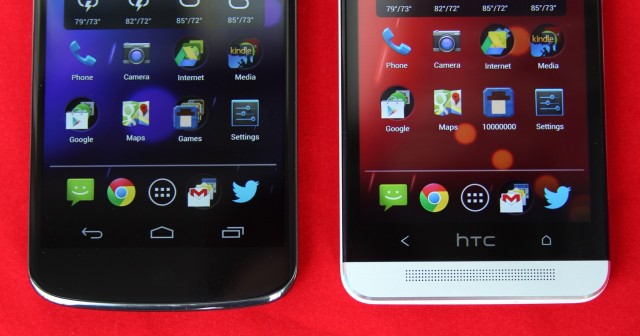
The Google Play Edition of the One lacks the onscreen software buttons of the Nexus 4. Double tapping the capacitive home button invokes the application switcher.
There are two big visible changes compared to the Nexus 4 Android experience: the first, obviously, is that the onscreen software buttons (part of the Android design spec for phones since version 4.0) are absent in favor of the One's capacitive home and back buttons, freeing up a few extra pixels on the One's screen, unless an app calls for the legacy Android Settings button, which shows up at the bottom, as it does on the standard One. The second is that a Beats Audio toggle has been added to the sound settings. When using the phone's built-in speaker, the setting makes a positive difference, and on the stock One, the Beats optimizations make the highs a bit less tinny and the lows a bit more bass-y than in the standard version.
Otherwise, the experience of actually using the Google Play edition One is identical to using the Nexus 4. Things are a little different under the hood, though—where Google manages both the operating system kernel and the UI on the "true" Nexus devices, it controls only the UI in the Google Play edition devices. This leaves the kernel itself in the hands of the OEMs, who will need to update it with their drivers and optimizations every time an Android update is issued. As we mentioned last week, this probably means that the Google Play edition phones won't receive their updates as quickly as the proper Nexus devices; however, without having to update their own custom skins and deal with carrier meddling testing, the updates should still come to the Play edition phones more quickly than the standard versions.
Camera
 The stock camera on the Nexus 4 arranges its settings around a circle.
The stock camera on the Nexus 4 arranges its settings around a circle. The Google Play edition phones arrange them in an arc that you navigate by dragging your finger.
The Google Play edition phones arrange them in an arc that you navigate by dragging your finger.
Most of the time, stock Android on the One is great—the phone is uncluttered by OEM and carrier-installed cruft, and the phone's speedy Snapdragon 600 has no trouble pushing the 1080p display. We'll get to some objective measurements of speed and battery life in a minute, but first we want to spend some time on one area where stock Android actually hurts the device: the camera.
First, there are the HTC-specific features that the "ultrapixel" camera on the One lacks, namely Zoe (which can stitch together several still images to convey action), the ability to stitch together "highlight movies" from short videos on your phone, and pretty much any feature that lets you combine two unsatisfactory photos to get one satisfactory one (like Always Smile or Object Removal). These have been replaced by a slightly tweaked version of the stock Android camera, which we assume will make it to the Nexus phones and tablets in the next release of Android.
Rather than the settings-in-a-circle used by the Android 4.2 camera, this new stock camera arranges most of the same settings (including white balance, ISO, flash, and others) in an arc that you navigate through by dragging your finger. We'd prefer something that just used buttons, frankly, but I suppose once you get used to the layout of the menu tree, it might lend itself well to quick on-the-fly adjustments.
Value-added camera and photo editing modes aside, there are also a few image quality issues in the Google Play edition's automatic shooting mode that aren't present in the standard One. We'll turn to actual photos to investigate.
First, a well-lit indoor shot of some of the junk on my desk. Examining the shots from the two cameras yields no significant differences to my eye, whether zoomed in or zoomed out.
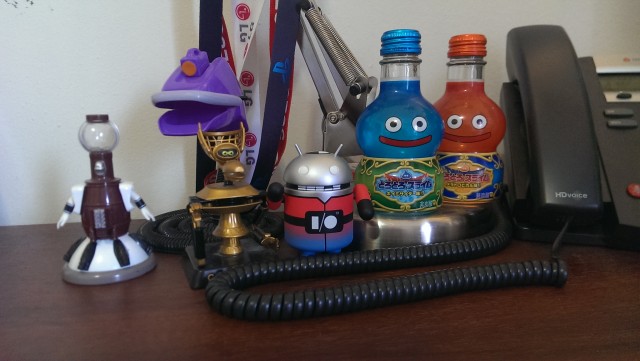 Standard edition.
Standard edition.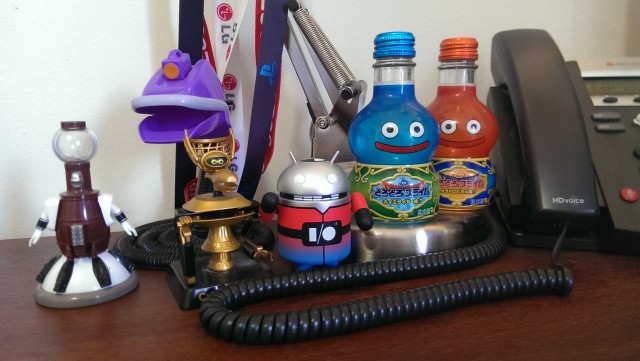 Google Play edition.
Google Play edition.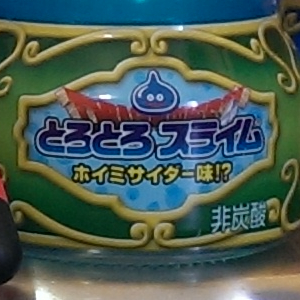
Standard edition.

Google Play edition.
Go outside and the story is different. Where the standard One is able to adjust its exposure to capture the details of the hedges and buildings, as well as the clouds in the mostly cloudy sky, the Google Play edition blows out the sky so that you can't see any of the clouds at all. Adjusting the auto-exposure by tapping on the sky makes it visible, but it makes the rest of the picture too dark to see. HDR is really designed for situations like this, though for the purposes of this comparison, we're really just looking at the full-auto modes that most regular people will use when they take pictures with their phones.
When zoomed in, the noise in the standard One's photo is a bit more apparent than in the Google Play edition—turning off HTC's slightly-too-aggressive image sharpening can help clear up these kinds of problems.
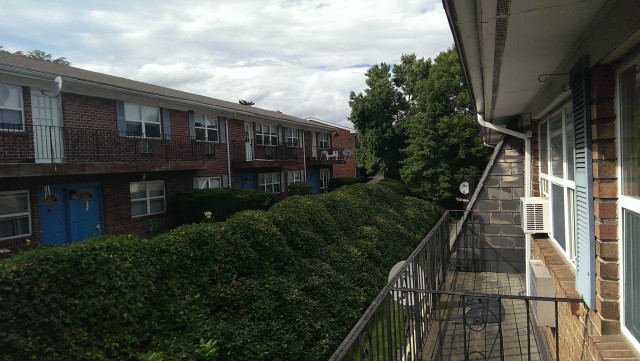 Standard edition.
Standard edition.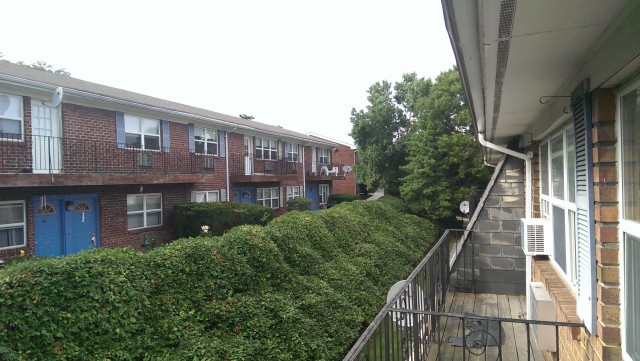 Google Play edition.
Google Play edition.
Standard edition.

Google Play edition.
Finally, the standard One edges out the Google Play edition when it comes to low-light pictures. The full auto mode on the Play edition is both dimmer and noisier zoomed out and close up.
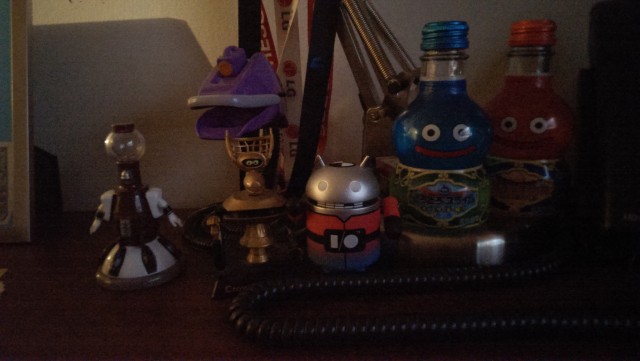 Standard edition.
Standard edition.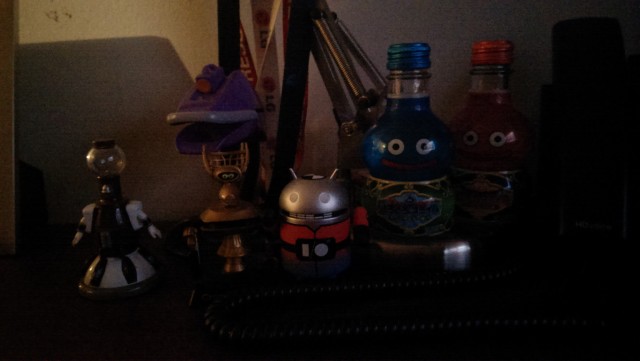 Google Play edition.
Google Play edition.
Standard edition.

Google Play edition.
The pictures that the two HTC Ones take are ultimately more similar than dissimilar, but overall the camera experience is worse on the stock version. You miss out on HTC's special camera features (which will affect some people), and in most cases you'll be taking slightly worse photos (which will affect most people).
Internals and performance
As on the outside, the inside of the Google Play edition HTC One is identical to the standard version: it has a quad-core, 1.7GHz Snapdragon 600 SoC and an Adreno 320 GPU, as well as 2GB of RAM, 802.11ac Wi-Fi, and 32GB of non-expandable internal storage. The IR blaster in the One doesn't currently work in the Google Play edition, but Google has said that it should be enabled in a future software update. As for cellular support, the HTC One will work with AT&T and T-Mobile out of the box in the US, but not Verizon or Sprint. The phone supports all of AT&T's HSPA+ and LTE bands, but it lacks support for HSPA+ Band 4 on T-Mobile (HSPA+ Band 2, the other one T-Mobile uses, is supported). It does support LTE Band 4 for T-Mobile, but that rollout is still in its early stages.
The surprise is that the stock One runs most of our benchmark suites quite a bit better than the standard edition, especially when you look at the GPU scores. Some of this, no doubt, can be attributed to the newer version of Android that the Google Play edition phone is running (4.2.2, versus our AT&T One's 4.1.2). However, the Google Play edition Galaxy S 4 also outruns the standard version despite the fact that the two phones are running the same version of the operating system.
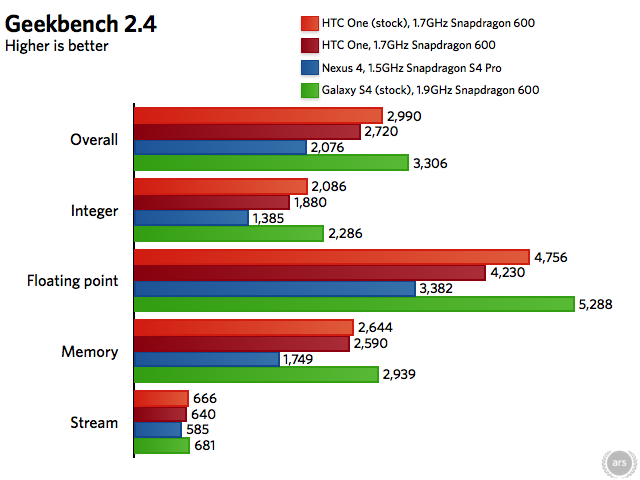
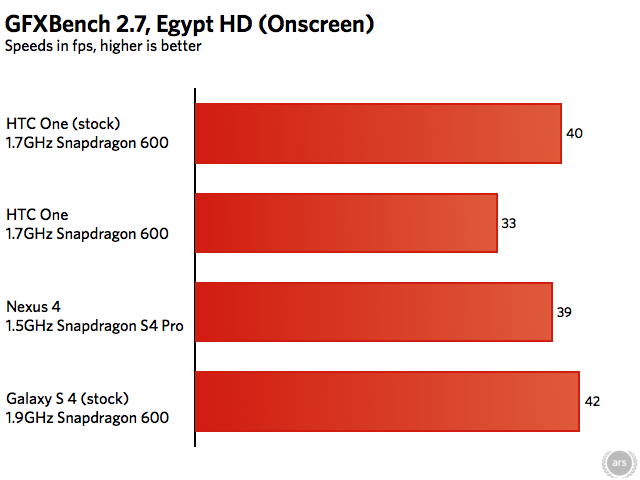
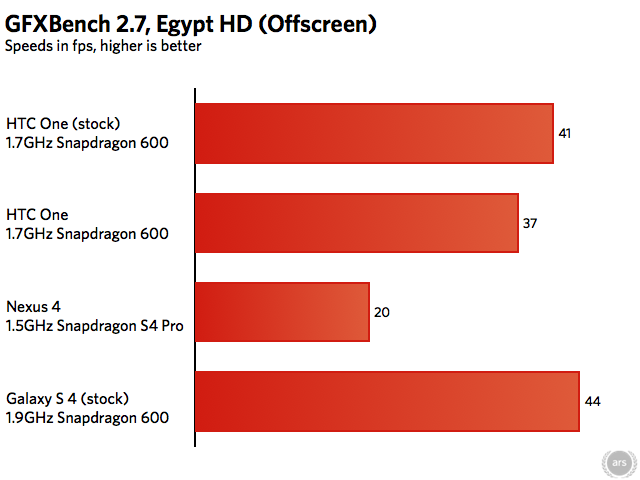

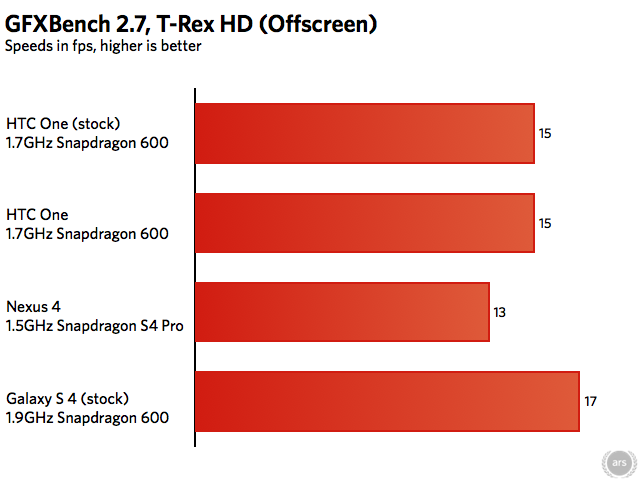
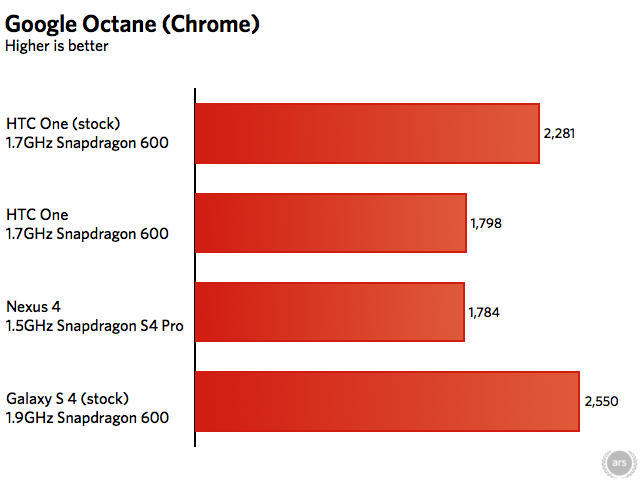
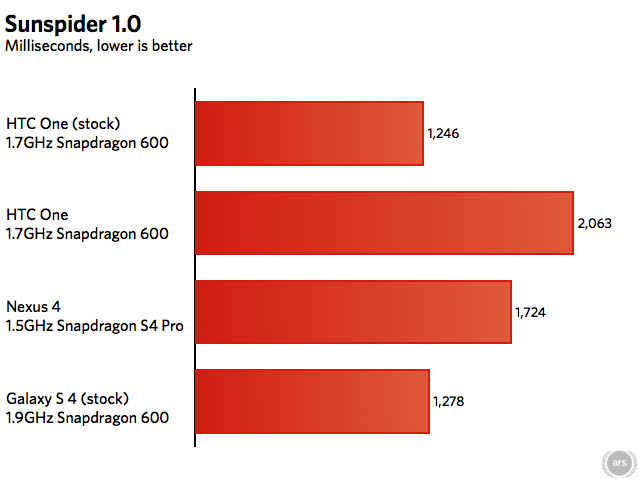
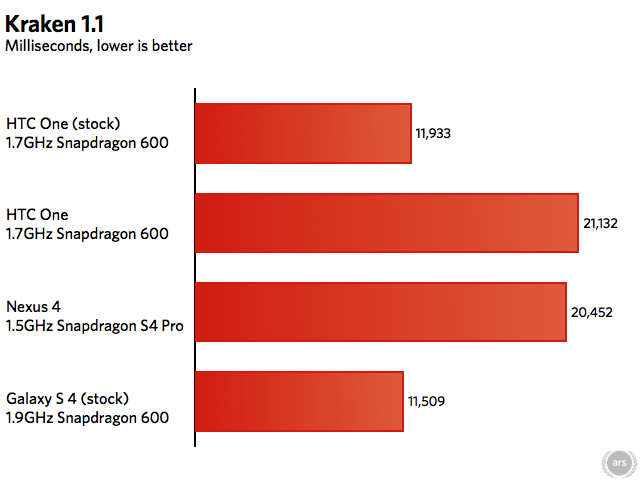
Battery
On the standard One, the "power saver" mode automatically kicked in when the phone reached a 14 percent charge. This setting automatically dims the screen slightly and caps the four CPU cores at about 1.13GHz (according to CPU-Z). When power saver mode engaged, we quickly went into the settings to disable it to maintain the apples-to-apples nature of the battery life testing.
Unlike the Google Play edition of the Galaxy S 4, which drained its battery more quickly than the standard version, the Google Play HTC One wins out here by a fair margin. The standard One could stream a video at 50 percent brightness for six hours and 24 minutes, while the Google Play edition lasted for six hours and 58 minutes. Engaging the power saver mode on the standard One might tilt the scales in the opposite direction, but as-is, the Google Play edition of the One is both faster and more battery-friendly out of the box.
As with the performance improvements, some of this battery life increase could stem from Android 4.2-related optimizations that will make it to the standard One when it's updated. The Google Play edition of the S 4 has slightly worse battery life than Samsung's standard version, so stock Android doesn't always necessarily equal better battery life.
The perfect phone for Android’s vocal minority
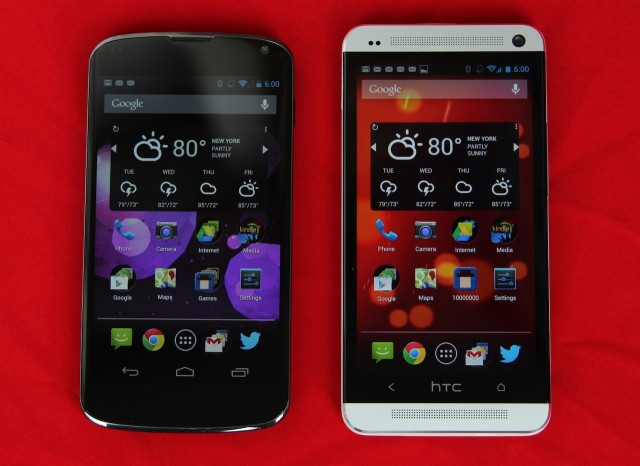 The Google Play edition of the HTC One is the perfect mid-cycle replacement for the Nexus 4.
The Google Play edition of the HTC One is the perfect mid-cycle replacement for the Nexus 4.
Before the Google Play edition phones, you had two choices if you wanted to run Android without also running an OEM skin: you could buy the Nexus phones, which come relatively cheap but only in one flavor at once, or you could buy a phone from one of Google's partners and wade into the murky custom ROM waters to get an experience closer to stock. The new HTC One and Galaxy S 4 are an opportunity to get well-supported, stable stock Android on a carrier-unlocked, high-end handset without needing to root your phone, void your warranty, and deal with potentially unstable ROMs.
The phones are probably hurt the most by their price, which is about the same as it would be for the standard editions without carrier subsidies. Google can afford to price its stock Android phones to move because its business doesn't rely on selling Nexus hardware at a profit, but the same is not true for Samsung or HTC.
Still, for a very specific subset of the developer and enthusiast community, the Google Play edition HTC One represents an opportunity to get rid of "or." You can now get one of the best Android phones available and a supported installation of stock Android, along with the promise of relatively prompt updates. That's a good thing, and we're hoping that Google continues to devote resources to the program.
The good
- The One is still some of the best phone hardware on the market
- Runs stock Android, with just a few tweaks to accommodate the One's front-facing speakers
- Faster than the standard edition
- Slightly better battery life than the standard edition
- Promise of prompt updates (though we'll see how far these phones lag behind the Nexuses when the rumored Android 4.3 finally lands)
The bad
- Pricey
- The stock Android camera and photo editing tools leave much to be desired
The ugly
- Verizon and Sprint users are still out in the cold
No comments:
Post a Comment
Let us know your Thoughts and ideas!
Your comment will be deleted if you
Spam , Adv. Or use of bad language!
Try not to! And thank for visiting and for the comment
Keep visiting and spread and share our post !!
Sharing is a kind way of caring!! Thanks again!